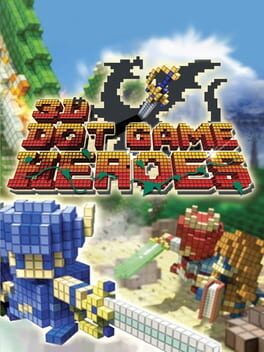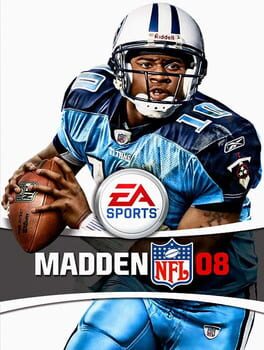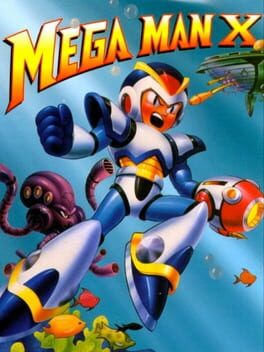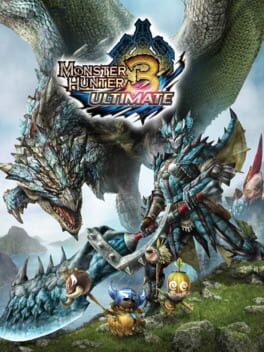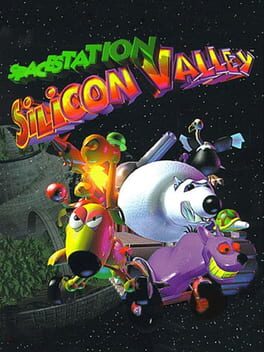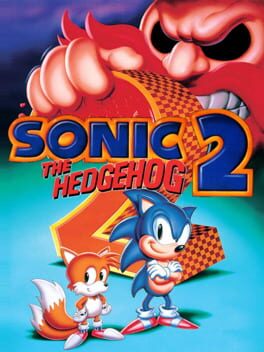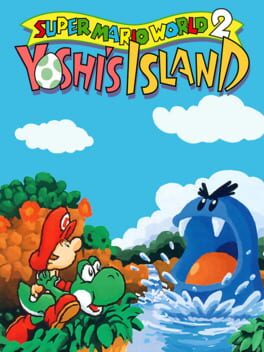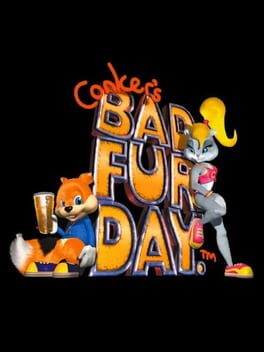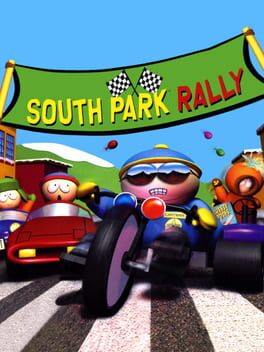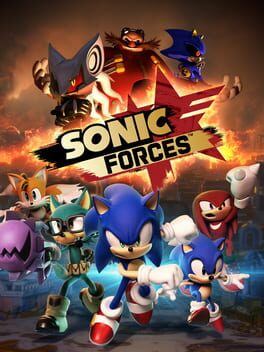SuperGKoopa
BACKER
2009
Rondo of Blood, my favorite Castlevania, is a unique mixture of the different approaches the series has gone through. It follows the "classicvania" controls but also gives you a backflip and extra mid-air movement. It's also the first installment where the graphics and music have a 90s anime flair, but still with that distinctive gothic horror inspiration. When it comes to difficulty, the game follows the intensity of the original but also offers Maria as a more relaxed playstyle option. If you're playing as the starting character Richter though, every enemy demands planning and timing to move forward. Whether checking out Rondo of Blood for the challenge or the vibes, it's a beautiful experience any way you play it.
If you're a TurboGrafx-16 fan, a Castlevania fan, or just an action-platformer fan in general, this is the #1 game to play for the spooky season.
If you're a TurboGrafx-16 fan, a Castlevania fan, or just an action-platformer fan in general, this is the #1 game to play for the spooky season.
2007
1993
Mega Man X has some of the best music tracks and art design on the SNES, but what really makes me love this game is the movement. Dashing and wall-jumping is the perfect evolution from the classic series, and adds so much the gameplay in terms of exploration and combat. The options for maneuvering in the platforming and battling now range all the way from basic hopping and shooting to aggressive weaving in and out. The most impressive part is that despite the freedom of motion granted to X, the game still finds ways to offer a consistent challenge. It’s the prime example of a platforming game making every moment as engaging as possible.
I have an incredible amount of bias towards Monster Hunter 3 Ultimate since it was my first Monster Hunter game. In fact, I had been so interested in the game from the start that when I saw it on sale, I picked it up months before I even had a Wii U. An action game entirely dedicated to lengthy boss battles just stood out from what I was expecting when looking into the early titles on the system. In a strange way, the Wii U's limited library worked in favor of this game with how easy it was to spend hundreds of hours replaying all the different hunts. Despite the long quests and numerous times that missions had to be replayed to get the right loot, it rarely ever feels like a grind. It's just a fun challenge that always feels so unbelievably satisfying when you finally take down that monster.
Although I appreciate how the later installments prioritize fast movement and drop the underwater fights, I'm also glad MH3U plays how it does for a uniquely "weighty" combat experience. I'll definitely be back for more once fan servers resurrect the online play.
Although I appreciate how the later installments prioritize fast movement and drop the underwater fights, I'm also glad MH3U plays how it does for a uniquely "weighty" combat experience. I'll definitely be back for more once fan servers resurrect the online play.
Most N64 “hidden gems” are pretty well known at this point, but Space Station Silicon Valley is still one of the best examples of the phrase.
SSSV operates around the GTA-esque theme of hijacking different robot animals, which range from basic penguins to hyena-motorcycle hybrids. In addition to making each level and mission feel unique with the different abilities and powers of each creature, it adds an extra layer of strategy to every mission. Instead of simply pushing a block on a switch or hitting a button, you have to consider which animal is best for moving and fighting through a given area, along with carefully positioning the robots for ease of swapping control between them. The game’s glitchy physics can complicate some missions, but most of the bugs can actually be used to the player’s advantage.
The game also stands out from other N64 titles with its unique graphics and sound design. SSSV’s cartoonish visual style has aged better than nearly any other N64 game, with sharp character models that make the most of low-poly limitations. Despite the simplicity, each robot animal stands out with their own distinctive shape and color scheme. Another great touch is the diegetic music, controlled by the numerous speakers throughout the levels. The volume naturally fluctuates as the player gets closer to the in-game source of the sound, and any noise can even be silenced by destroying the amps. Between a unique visual style and clever use of sound, SSSV is a surprisingly immersive experience.
Since there isn’t an in-game map or guide to thoroughly explain how all the animals and levels work, you’d definitely be justified in using a walkthrough for the weirder puzzles (especially since a cheat code is required for 100% collection). This is still the first game I’d recommend someone try out if they want to dig into the more obscure sections of the Nintendo 64 library.
SSSV operates around the GTA-esque theme of hijacking different robot animals, which range from basic penguins to hyena-motorcycle hybrids. In addition to making each level and mission feel unique with the different abilities and powers of each creature, it adds an extra layer of strategy to every mission. Instead of simply pushing a block on a switch or hitting a button, you have to consider which animal is best for moving and fighting through a given area, along with carefully positioning the robots for ease of swapping control between them. The game’s glitchy physics can complicate some missions, but most of the bugs can actually be used to the player’s advantage.
The game also stands out from other N64 titles with its unique graphics and sound design. SSSV’s cartoonish visual style has aged better than nearly any other N64 game, with sharp character models that make the most of low-poly limitations. Despite the simplicity, each robot animal stands out with their own distinctive shape and color scheme. Another great touch is the diegetic music, controlled by the numerous speakers throughout the levels. The volume naturally fluctuates as the player gets closer to the in-game source of the sound, and any noise can even be silenced by destroying the amps. Between a unique visual style and clever use of sound, SSSV is a surprisingly immersive experience.
Since there isn’t an in-game map or guide to thoroughly explain how all the animals and levels work, you’d definitely be justified in using a walkthrough for the weirder puzzles (especially since a cheat code is required for 100% collection). This is still the first game I’d recommend someone try out if they want to dig into the more obscure sections of the Nintendo 64 library.
2021
I was preparing for Metroid Dread to offer immersive exploration and intense combat, and all my expectations were still blown away. This is the first 2D Metroid where everything feels consistently responsive and precise, and it's all in service of the perfect moveset that just gets better as the game progresses. Like I had hoped after playing Samus Returns, parrying now has momentum behind it and opens up so many options for both fighting and navigating the game. If all the beautiful regions weren't enough reason to traverse Dread's world, just moving around in general feels fluid and satisfying. This is the kind of game that is does a phenomenal job of integrating its story into the control scheme as well, turning the EMMI segments into a true test of how capable you are of controlling Samus under immense pressure. I'll be returning to Metroid Dread many times, as I can tell it's the type of game that's dedicating to offering that perfect fulfilling experience.
1991
Maybe my standards were affected by experiencing the original Sonic the Hedgehog on only an iPhone touch screen for many years, but my playthrough on the PS2’s Mega Collection Plus version was pretty enjoyable.
It’s an exceptionally simple platformer, even by 1991 design, but Sonic 1 has moments in every level that really capture a sense of speed from loop-de-loops, bumpers, and springs. During the times that you’re really moving fast, taking damage isn’t actually a huge penalty because you always have a few seconds to regain some of your health after a hit. Holding onto enough rings to enter the special stages at the end of a stage requires a lot of planning and can fall into trial-and-error territory. However, the whole game also has a great soundtrack and level aesthetics, which helps out the slower-paced Marble Zone and Labyrinth Zone a lot. With how short and easy the game (if you’re not focused on getting all the Master Emeralds), it’s an essential experience for those interested in video game history.
I think that Sonic makes much more sense as an armadillo though.
It’s an exceptionally simple platformer, even by 1991 design, but Sonic 1 has moments in every level that really capture a sense of speed from loop-de-loops, bumpers, and springs. During the times that you’re really moving fast, taking damage isn’t actually a huge penalty because you always have a few seconds to regain some of your health after a hit. Holding onto enough rings to enter the special stages at the end of a stage requires a lot of planning and can fall into trial-and-error territory. However, the whole game also has a great soundtrack and level aesthetics, which helps out the slower-paced Marble Zone and Labyrinth Zone a lot. With how short and easy the game (if you’re not focused on getting all the Master Emeralds), it’s an essential experience for those interested in video game history.
I think that Sonic makes much more sense as an armadillo though.
The original Donkey Kong Country is an enjoyable SNES 2D platformer but its gameplay wasn’t anything too unique. Luckily, Donkey Kong Country 2: Diddy’s Kong Quest improves on nearly every aspect of the 1st entry to create a truly special experience.
When I played DKC1, I rarely ever chose Donkey Kong due to Diddy having a massive advantage in agility. In DKC2, the characters Diddy and Dixie are given much more distinctive abilities and are well balanced between speed and gliding. I really appreciate the team-up throws in the sequel as well. It’s a risk throwing around the equivalent of your healthbar, but the possibilities for shortcuts and hitting distant enemies make it worth learning how to nail the move. Even the level endings have been enhanced. Instead of simply walking off screen, the barrel strength tester offers one more trial in timing.
About halfway through DKC2’s world, the difficulty increase became one of the most apparent changes. The game has a huge amount of variety in level design, especially when you throw in all the new animal buddies. For every new game mechanic like balloons, wind, or honey, there’s always a gradual learning curve to familiarize the player. However, every level continuously combines the challenges with previous threats in a way that always keeps you prepared yet in suspense for what’s to come. With the addition of the DK and Kremcoins, the player needs to be especially attentive to notice the hidden areas and bonus barrels as well if they want to get 102%. Aside from some unclear hitboxes as a result of the pre-rendered graphics on a 2D plane, everything here is a perfect challenge.
Of course, I have to give a shoutout to David Wise’s soundtrack for this game. The songs here go beyond just setting the ambiance for the levels and overworld, and are incredible to listen to in any setting. Stickerbush Symphony and Snow Bound Land are some of my favorite themes from any game, and the credits music made me want to start playing the game all over again. Even if someone hasn’t touched the first entry or even a platformer in general, I’d recommend Diddy’s Kong Quest to anyone looking for a game that exemplifies satisfaction in skill and creativity.
Part of the Glitchwave Top 100 Project (#88/100)
When I played DKC1, I rarely ever chose Donkey Kong due to Diddy having a massive advantage in agility. In DKC2, the characters Diddy and Dixie are given much more distinctive abilities and are well balanced between speed and gliding. I really appreciate the team-up throws in the sequel as well. It’s a risk throwing around the equivalent of your healthbar, but the possibilities for shortcuts and hitting distant enemies make it worth learning how to nail the move. Even the level endings have been enhanced. Instead of simply walking off screen, the barrel strength tester offers one more trial in timing.
About halfway through DKC2’s world, the difficulty increase became one of the most apparent changes. The game has a huge amount of variety in level design, especially when you throw in all the new animal buddies. For every new game mechanic like balloons, wind, or honey, there’s always a gradual learning curve to familiarize the player. However, every level continuously combines the challenges with previous threats in a way that always keeps you prepared yet in suspense for what’s to come. With the addition of the DK and Kremcoins, the player needs to be especially attentive to notice the hidden areas and bonus barrels as well if they want to get 102%. Aside from some unclear hitboxes as a result of the pre-rendered graphics on a 2D plane, everything here is a perfect challenge.
Of course, I have to give a shoutout to David Wise’s soundtrack for this game. The songs here go beyond just setting the ambiance for the levels and overworld, and are incredible to listen to in any setting. Stickerbush Symphony and Snow Bound Land are some of my favorite themes from any game, and the credits music made me want to start playing the game all over again. Even if someone hasn’t touched the first entry or even a platformer in general, I’d recommend Diddy’s Kong Quest to anyone looking for a game that exemplifies satisfaction in skill and creativity.
Part of the Glitchwave Top 100 Project (#88/100)
1992
I’m a huge Metropolis Zone defender in this game, and it might actually be my favorite part of Sonic 2. Every enemy feels like a real threat, placed exactly to test your reflexes and planning. Their fast attacks might toe the line of being cheap, but they all have patterns to efficiently take them out. Just barely brushing past a mechanical starfish’s needle is one of the most satisfying moments of the game. From an aesthetic angle, a completely industrialized theme is always a perfect contrast with Sonic. Everything under Robotnik’s design gives a great deal of urgency to complete your mission. With the best song in the game pushing you on, Metropolis Zone is one of the most challenging but rewarding trials in Sonic the Hedgehog 2.
Yoshi's Island is one of the best examples of a sequel creating its own identity while also continuing the main idea of the original.
The storybook art style is one of the most obvious changes, giving the game a unique "arts and crafts" appearance. Everything has a surprisingly tactile look to it, like creating the pages of a journal in real time. It's still one of the best-looking pieces in the entire medium of video games. Likewise, the soundtrack takes a more "relaxed" approach compared to the original's energetic songs. The world map in particular has one of the most satisfying instances of a medley that adds instruments as you progress. Combined with a few remixes, the original pieces perfectly capture the "feel-good" atmosphere of Yoshi's Island.
Another key difference is the shift to Yoshi as the main character. Yoshi's hopping feels just as tight as Mario's jumping in the original Super Mario World, but the new moves offer some great variety in any situation. The flutter jump is an ideal jump assist for either extra distance or readjusting a landing. Now able to throw eggs, Yoshi has projectiles to ricochet all around the room as long as he keeps eating and aiming properly. Even with all the options, Yoshi's moves of stomping, eating, and tossing eggs are perfectly balanced, and it never felt like I was only using one approach.
If Super Mario World was all about diverse 2D platforming with fun power-ups, Yoshi's Island adapts the formula to a new character and offers a perfect range of playstyles during every minute. Even with Baby Mario's occasional crying, Yoshi's Island is a treat to play.
Part of the Glitchwave Top 100 Project (#78/100)
The storybook art style is one of the most obvious changes, giving the game a unique "arts and crafts" appearance. Everything has a surprisingly tactile look to it, like creating the pages of a journal in real time. It's still one of the best-looking pieces in the entire medium of video games. Likewise, the soundtrack takes a more "relaxed" approach compared to the original's energetic songs. The world map in particular has one of the most satisfying instances of a medley that adds instruments as you progress. Combined with a few remixes, the original pieces perfectly capture the "feel-good" atmosphere of Yoshi's Island.
Another key difference is the shift to Yoshi as the main character. Yoshi's hopping feels just as tight as Mario's jumping in the original Super Mario World, but the new moves offer some great variety in any situation. The flutter jump is an ideal jump assist for either extra distance or readjusting a landing. Now able to throw eggs, Yoshi has projectiles to ricochet all around the room as long as he keeps eating and aiming properly. Even with all the options, Yoshi's moves of stomping, eating, and tossing eggs are perfectly balanced, and it never felt like I was only using one approach.
If Super Mario World was all about diverse 2D platforming with fun power-ups, Yoshi's Island adapts the formula to a new character and offers a perfect range of playstyles during every minute. Even with Baby Mario's occasional crying, Yoshi's Island is a treat to play.
Part of the Glitchwave Top 100 Project (#78/100)
1993
When I had previously played Doom, I had a great deal of respect for the historical aspect of the game, but there was something about the graphics that made my eyes sore after just a few minutes. However, I went with the DSDA Doom version instead of the Steam port and that issue went away after I turned off weapon and view bobbing. From there, I had a much more enjoyable experience with the original Doom.
One of the biggest factors that I love about this game is the incredibly fast movement speed. Unlike so many other shooters (especially modern entries in the genre), I was always able to go exactly as fast as I wanted to at anytime. Just as importantly, the controls were also very precise, which lead to some immensely satisfying weaves and strafes through enemy fire. Any damage given or taken was all down to positioning, which I always felt in control of. On top of that, the speedy movement was perfect for navigating the levels. It helped make exploration feel just as fast-paced as the combat, and never made it a slog to cross even the largest rooms.
Another aspect I quickly grew to appreciate this time around is the gruesome visual style. The wide variety of texture definitely helps in keeping a sense of direction, but just as importantly, it perfectly conveys an eerie atmosphere. There were a few instances where I would stop just to admire the macabre environments. I can’t think of any other game that conveys the dread and horror of traversing through hell just as expertly as Doom does.
Part of the Glitchwave Top 100 Project (#100/100)
One of the biggest factors that I love about this game is the incredibly fast movement speed. Unlike so many other shooters (especially modern entries in the genre), I was always able to go exactly as fast as I wanted to at anytime. Just as importantly, the controls were also very precise, which lead to some immensely satisfying weaves and strafes through enemy fire. Any damage given or taken was all down to positioning, which I always felt in control of. On top of that, the speedy movement was perfect for navigating the levels. It helped make exploration feel just as fast-paced as the combat, and never made it a slog to cross even the largest rooms.
Another aspect I quickly grew to appreciate this time around is the gruesome visual style. The wide variety of texture definitely helps in keeping a sense of direction, but just as importantly, it perfectly conveys an eerie atmosphere. There were a few instances where I would stop just to admire the macabre environments. I can’t think of any other game that conveys the dread and horror of traversing through hell just as expertly as Doom does.
Part of the Glitchwave Top 100 Project (#100/100)
2001
It was quite a surprise playing Conker's Bad Fur Day for the first time in 2021. In the two decades since the game's original release, many of the edgier aspects like swearing and violence have been normalized to the point of being the default in the medium. However, Conker is just so creative with using its mature themes that it still provides a unique experience. Even with something as typically one-note as poop humour, Conker fully commits to the idea and contains an entire location with floors and walls of feces, music composed of flatulence, and a sentient singing pile of the stuff. Pushing turd balls around and dropping them on enemies’ heads is another highlight that can’t be ignored. It's an experience that stands out on not just the Nintendo 64, but the medium of video games as a whole.
2000
2017
Not quite as devoid of content or glitchy as I expected, but this is one of the most extreme cases of the "Hold a directional button and sometimes jump" Sonic stereotype. The most challenging part was trying to make a character that isn't the ugliest-looking thing in the series (I didn't succeed at this).
